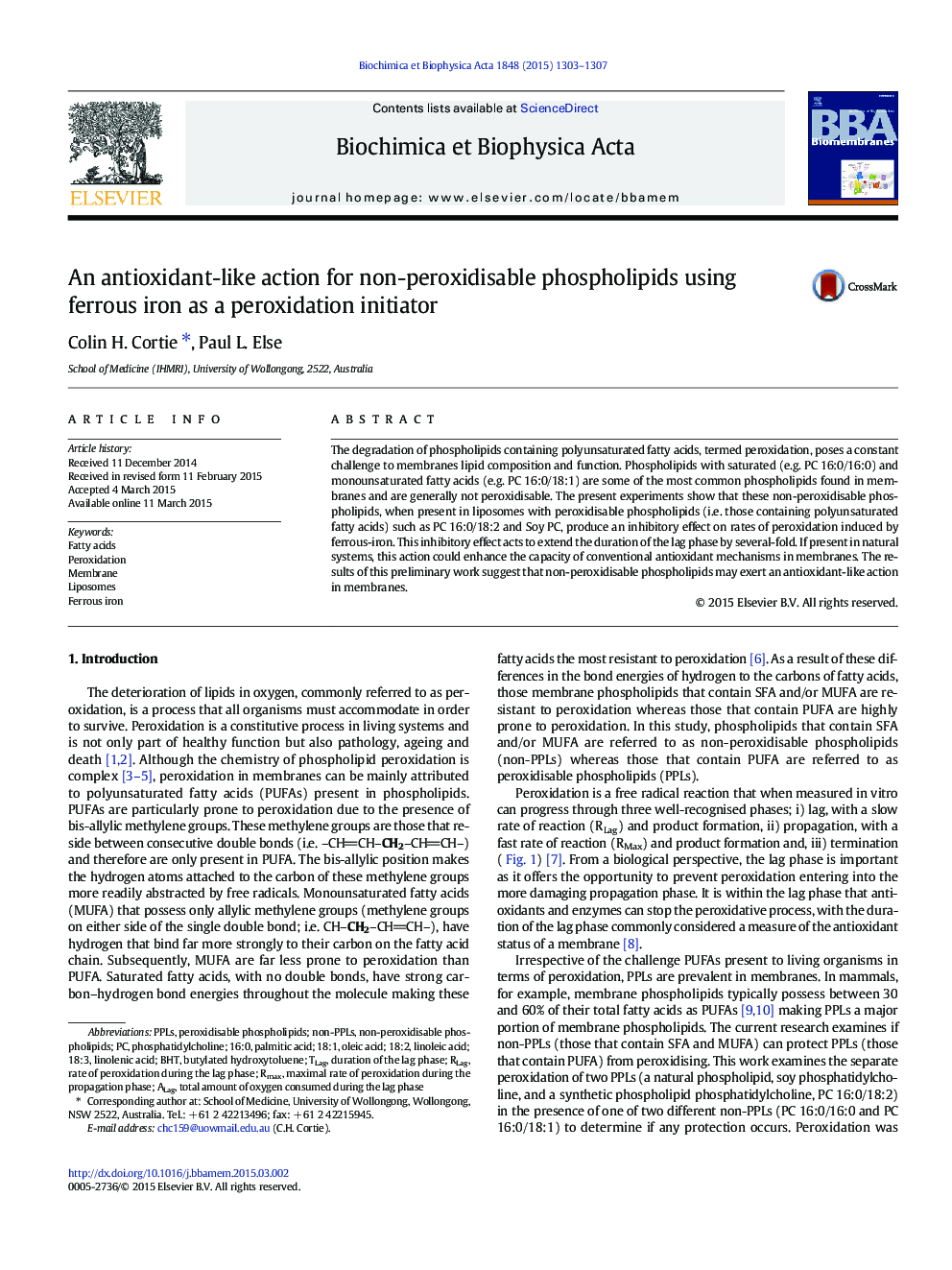| Article ID | Journal | Published Year | Pages | File Type |
|---|---|---|---|---|
| 1944103 | Biochimica et Biophysica Acta (BBA) - Biomembranes | 2015 | 5 Pages |
•Non-peroxidisable phospholipids can delay the onset of peroxidation.•This mechanism relies on a weak inhibitory effect on rates of peroxidation.•This antioxidant-like activity is likely to augment the action of traditional antioxidants.
The degradation of phospholipids containing polyunsaturated fatty acids, termed peroxidation, poses a constant challenge to membranes lipid composition and function. Phospholipids with saturated (e.g. PC 16:0/16:0) and monounsaturated fatty acids (e.g. PC 16:0/18:1) are some of the most common phospholipids found in membranes and are generally not peroxidisable. The present experiments show that these non-peroxidisable phospholipids, when present in liposomes with peroxidisable phospholipids (i.e. those containing polyunsaturated fatty acids) such as PC 16:0/18:2 and Soy PC, produce an inhibitory effect on rates of peroxidation induced by ferrous-iron. This inhibitory effect acts to extend the duration of the lag phase by several-fold. If present in natural systems, this action could enhance the capacity of conventional antioxidant mechanisms in membranes. The results of this preliminary work suggest that non-peroxidisable phospholipids may exert an antioxidant-like action in membranes.
Graphical abstractFigure optionsDownload full-size imageDownload high-quality image (174 K)Download as PowerPoint slide
